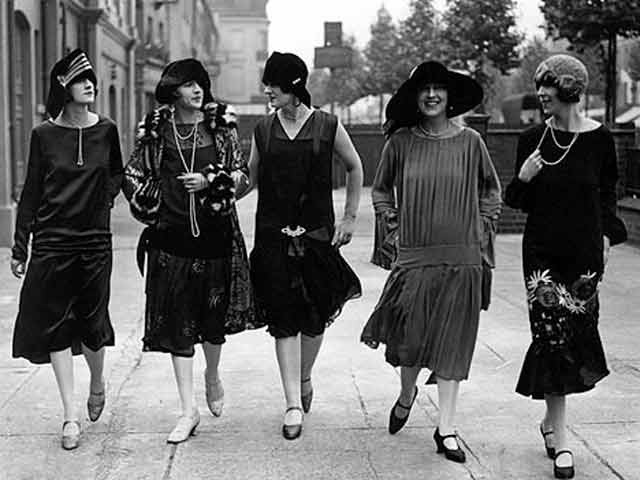The Roaring Twenties
The 1920s, often referred to as the Roaring Twenties, marked a significant shift in societal norms, particularly in the realm of fashion. This era witnessed the rise of the modern woman, breaking free from the constraints of traditional Victorian attire and embracing a newfound sense of freedom and individuality.
The Liberation of Women
Flappers: Icons of Change
Central to the fashion www.prowomen.us/ revolution of the 1920s were the flappers, young women who epitomized the spirit of rebellion and liberation. With their bobbed hair, shortened skirts, and penchant for dancing the Charleston, flappers became emblematic of a new era characterized by independence and confidence.
Breaking Traditional Norms
Gone were the days of corsets and restrictive clothing. Women of the 1920s embraced looser, more comfortable garments that allowed for greater movement and self-expression. The shift towards shorter hemlines and sleeveless dresses symbolized a departure from the modesty of previous generations, signaling a bold assertion of female autonomy.
Silhouettes and Fabrics
The Rise of the Flapper Dress
The iconic flapper dress, characterized by its dropped waistline and straight silhouette, became the quintessential garment of the 1920s. Made from luxurious fabrics such as silk and satin, these dresses exuded elegance and sophistication while still allowing women to move freely and dance with abandon.
Fabrics and Embellishments
In addition to sumptuous fabrics, 1920s fashion was also defined by intricate embellishments such as beading, sequins, and fringe. These decorative elements added a touch of glamour to the era’s flapper dresses, elevating them from simple garments to works of art.
Hairstyles and Accessories
The Bob Cut: Symbol of Liberation
One of the most iconic hairstyles of the 1920s was the bob cut, a short, sleek style that represented a break from traditional femininity. Popularized by Hollywood stars like Clara Bow and Louise Brooks, the bob became synonymous with modernity and sophistication, signaling a departure from long, elaborate hairstyles of the past.
Statement Accessories
Accessories played a crucial role in completing the look of a 1920s flapper. From beaded headbands and feathered boas to long strands of pearls and elaborate brooches, accessories were used to add flair and personality to an outfit, allowing women to showcase their individual sense of style.
Makeup Trends
Bold Lips and Smoky Eyes
1920s makeup was characterized by bold, dramatic looks that emphasized the eyes and lips. Dark, smoky eyeshadow and heavily lined eyes were paired with vibrant red lipstick, creating a striking contrast that captured the spirit of the era’s hedonistic nightlife.
The Influence of Cinema
The burgeoning film industry of the 1920s had a profound influence on fashion and beauty trends. Silent film stars like Greta Garbo and Marlene Dietrich set the standard for glamour and sophistication, inspiring women around the world to emulate their signature looks.
Fashion Icons of the 1920s
Coco Chanel: Pioneer of Modern Fashion
No discussion of 1920s fashion would be complete without mentioning Coco Chanel, the pioneering designer who revolutionized the way women dressed. Chanel’s elegant, understated designs challenged the conventions of the time, offering women a new sense of freedom and self-expression.
Josephine Baker: A Style and Cultural Icon
Josephine Baker, the legendary entertainer and civil rights activist, was another influential figure in 1920s fashion. Known for her daring performances and extravagant costumes, Baker embodied the spirit of the Jazz Age, captivating audiences with her charisma and style.
The Impact of World Events
The End of World War I
The end of World War I in 1918 ushered in a period of unprecedented social change and economic prosperity. With the war finally over, people were eager to put the past behind them and embrace the promise of a brighter future, fueling a sense of optimism and exuberance that defined the Roaring Twenties.
The Prohibition Era
The Prohibition era, which banned the sale and consumption of alcohol in the United States from 1920 to 1933, had a profound impact on the culture and nightlife of the 1920s. Speakeasies flourished, and illegal bars became hotbeds of creativity and innovation, providing a backdrop for the era’s hedonistic excesses.
Legacy and Influence
Modern Resurgence of 1920s Fashion
Nearly a century later, the influence of 1920s fashion continues to be felt in contemporary design. From flapper-inspired dresses on the runway to vintage-inspired makeup tutorials on social media, the timeless elegance and glamour of the Jazz Age continue to captivate and inspire.
Cultural Impact on Women’s Rights
Beyond its aesthetic legacy, the fashion of the 1920s also played a significant role in advancing women’s rights and reshaping societal attitudes towards gender and identity. By challenging traditional notions of femininity and embracing a more liberated, self-assured vision of womanhood, the women of the 1920s paved the way for future generations to pursue their own dreams and aspirations.
Conclusion
The fashion of the 1920s was more than just a reflection of changing tastes and trends—it was a cultural phenomenon that reshaped the way we think about gender, identity, and individuality. From the iconic flapper dresses to the daring hairstyles and makeup looks of the era, the fashion of the Roaring Twenties continues to inspire and captivate us today.










